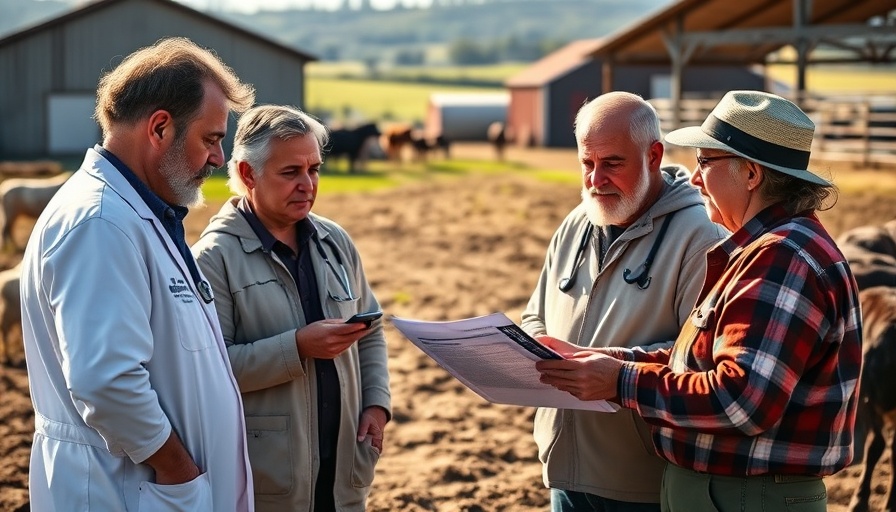
Addressing the Growing Veterinary Shortage: The USDA's Bold Move
The rural veterinary shortage has reached alarming levels, threatening both animal health and agricultural productivity across the United States. In response, the USDA has unveiled a comprehensive initiative—the Rural Veterinary Action Plan—aimed at not only addressing this critical gap but also ensuring that veterinarians are accessible in underserved areas where their services are needed most. This new approach emphasizes collaborative solutions and innovative strategies to revitalize the rural veterinary workforce.
The Cause of Veterinary Shortages and Its Impacts
In recent years, several factors have contributed to the dwindling number of rural veterinarians, including an aging workforce, student debt burdens, and a lack of career incentives in rural settings. As highlighted in various reports, the dwindling number of practitioners in these communities has led to a ripple effect, adversely impacting livestock farmers and pet owners alike who depend on prompt and quality veterinary care.
Innovative Strategies to Attract New Talent
The USDA's plan sets forth several strategies designed to attract new veterinarians to rural areas, including offering educational grants and loan repayment programs. According to the American Veterinary Medical Association (AVMA), implementing financial incentives can significantly influence recent graduates’ decisions on where to practice. By providing aid, the USDA hopes to ease financial burdens and lead veterinarians toward underserved regions.
The Role of Technology in Veterinary Services
Embracing technology will also play a crucial role in addressing this shortage. The USDA's initiative supports telemedicine and digital platforms that can facilitate remote consultations, thereby extending the reach of rural veterinarians. New tools and applications not only improve service delivery but also provide clients access to vital information, enhancing the overall client-veterinary relationship.
Community Engagement and Collaboration
Community involvement is another essential aspect of the Rural Veterinary Action Plan. Engaging local stakeholders, including agricultural organizations and universities, fosters an environment where shared goals can drive concerted action. Collaborations will focus on promoting the value of veterinary services, aiming to elevate their prominence in community health.
Future Insights: What Lies Ahead for Rural Veterinary Practice
The success of the USDA's actions will pave the way for future initiatives aimed at correcting imbalances in veterinary service distribution. As more programs are developed, veterinarians can expect creative partnerships that deliver additional support on multiple fronts—education, infrastructure, and community engagement—ultimately strengthening the profession.
Veterinary clinic owners and managers should stay informed about these developments and consider how they can leverage these new initiatives not only to attract talent but also to enhance their operations and profitability. Keeping an ear to the ground on these changes can position practices for success in an evolving landscape.
 Add Row
Add Row  Add
Add 




Write A Comment